Behind the scenes with Disney's baby elephant: 'We don't force our animals to do anything'
"Behind the Scenes” is a five-part series focusing on the inner workings of the travel industry and how those impact the consumer’s final product. If you'd like to contribute to our future reporting and share your experience as a source, you can click here to fill out this quick form.
“A baby!”
The delight in a child’s voice ringing across Kilimanjaro Safaris’ savanna captured the mood earlier this month as Corra, a two-month-old African elephant, made her public debut at Disney’s Animal Kingdom.
The spritely calf looked tiny next to her mom, Nadirah, despite weighing 312 pounds.
“They're dense, so they're all muscle and joy,” said Dr. Scott Terrell, Director of Animal & Science Operations for Disney’s Animals, Science and Environment, which cares for all the animals across Walt Disney World. “She's like a little kid. She wants to run and play and climb.”
Corra bounded ahead of her mom as onlookers cooed from afar.
The baby elephant is precious, but not just because she’s cute. Her species is endangered, and she embodies everything Disney's Animal Kingdom is working toward, as USA TODAY learned behind the scenes.
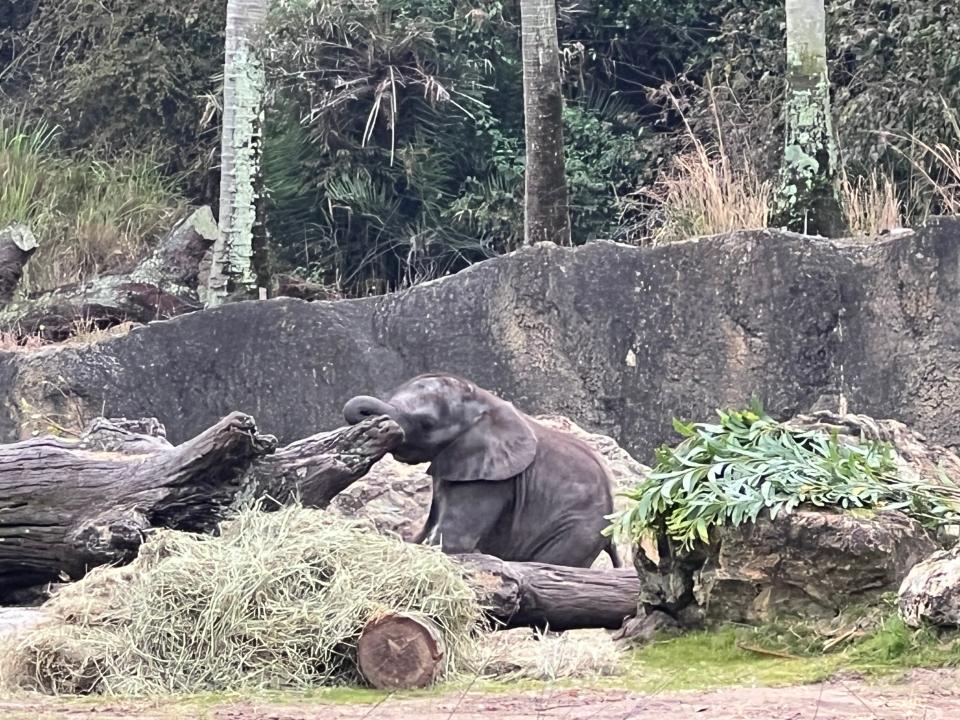
Not just good times: What happens behind the scenes of Mardi Gras at Universal Orlando Resort
How does Disney's Animal Kingdom care for elephants?
“This is years in the making,” said Liz Warncke, Animal Care Manager for Disney’s Animals, Science and Environment.
Corra is the first third-generation African elephant at Disney's Animal Kingdom and the eighth calf of her kind to be born there. Her mom, Nadirah, and aunts, Luna and Stella, were also born at the Florida park, which is a leading zoological institution accredited by the gold-standard Association of Zoos and Aquariums.
“I've been at Disney for 10 years now, on the elephant team, and to see these girls grow up and now become first-time moms, it's been very rewarding,” said Warncke. “They're all supportive of Corra.” She said the matriarchal family group would likely spend their whole lives together like they would in the wild.
There are five other elephants at Animal Kingdom: a group of two females and then three males, including Corra's dad, Mac. The care they receive is a snapshot of the care all animals get at Disney World, but there are some differences with elephants.
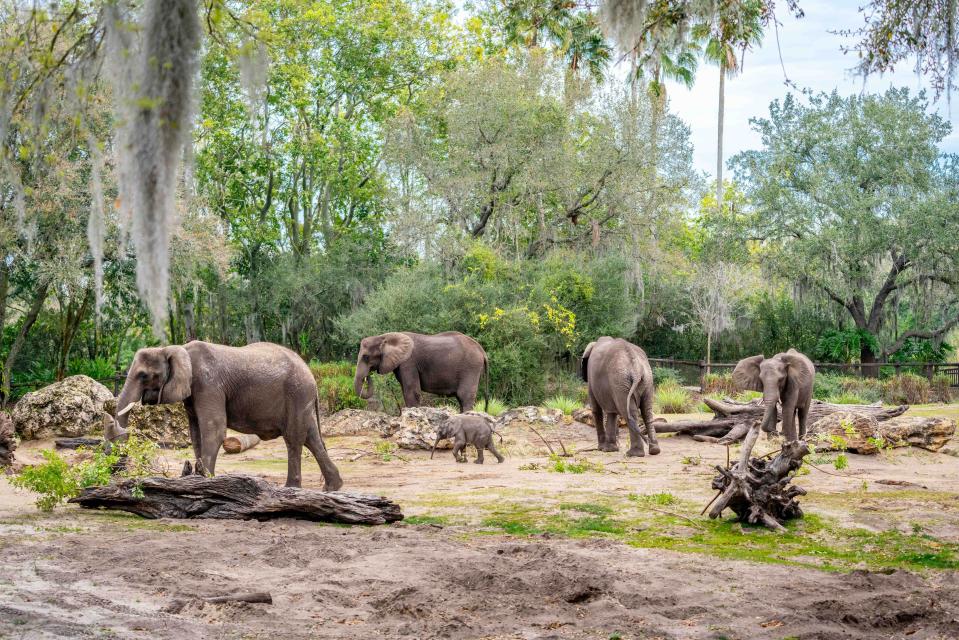
“We're the only animal care team that only cares for one individual species, and that's just because it's such a hard job. It takes a lot,” Warncke said.
There are 15 keepers that focus solely on elephants. Other keepers care for multiple species. Terrell said keepers know the animals like family. “Their hearts and minds are exactly where all of us would want.”
He added, “As a matter of principle, we don't force our animals to do anything.”
Instead, animals are given positive reinforcement and rewards like high-value snacks. Many also have audio cues to draw their attention. Depending on the animal, it could be a voice cue like calling a name or banging pots and pans.
“Corra actually knows her name now, which is great,” Warncke said. “So we just call them back one at a time. They're very smart, and they're super food motivated.”
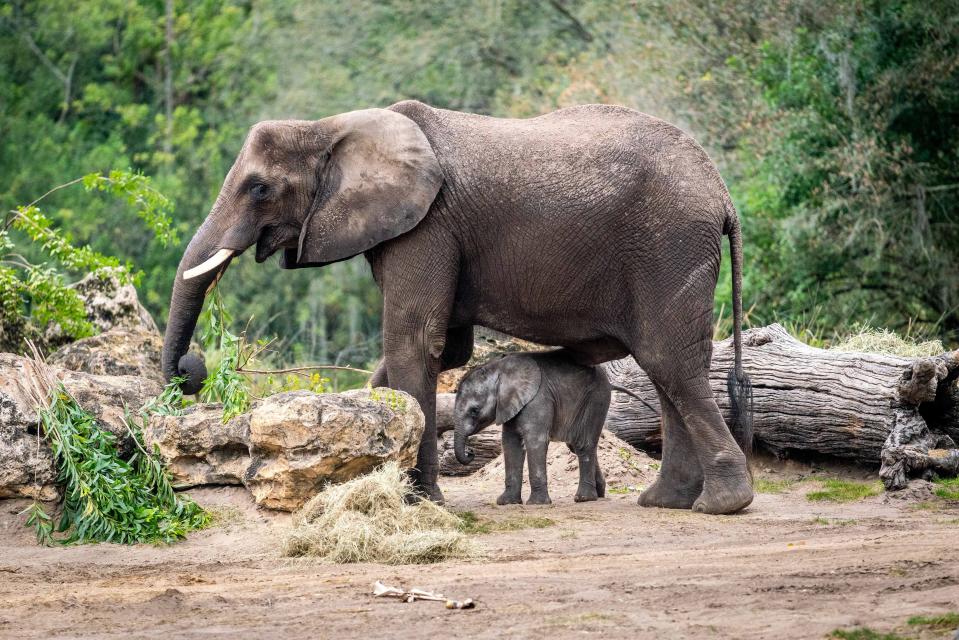
Participation in activities like welfare checks is voluntary.
“If they don't want their blood drawn, they don't have to. They can walk away, which is with a lot of our animals here,” said Sam Shablin, an endocrinology research associate for Disney’s Animals, Science and Environment who helps track animal physiology through hormone levels. “It’s the same with our training of the animals, too. If they don't want to train that day, they don't need to. They can go do whatever they want.”
Many animals have additional space backstage at the park. The elephants have a big barn with outdoor yards.
“On our rare cold days in Florida, the barn is a heat source if we need it,” Terrell said, noting they try to avoid having elephants inside or on concrete as much as possible.
How did Disney's Animal Kingdom prepare for the elephant's birth?
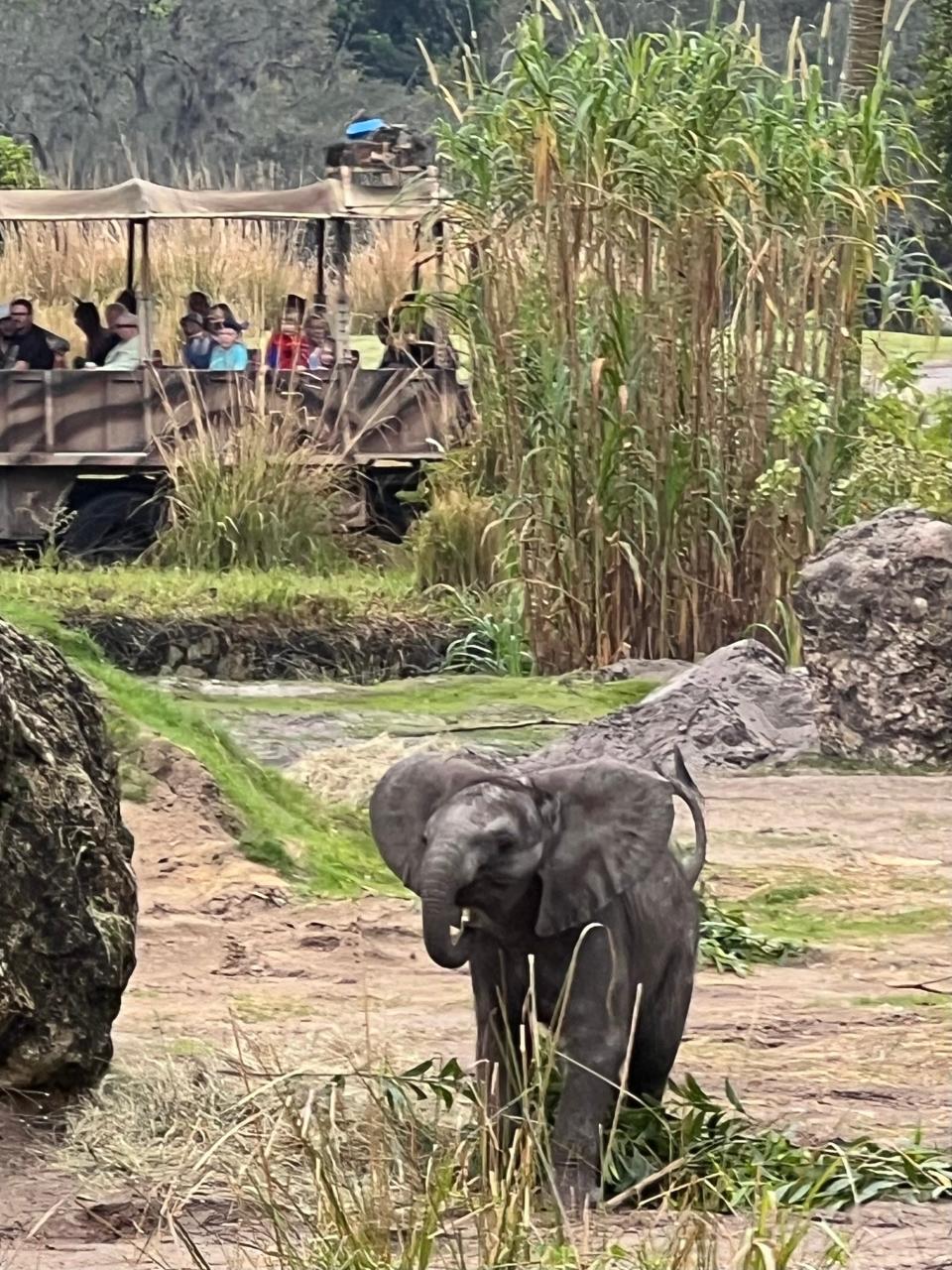
After nearly 22 months of gestation, Corra was born in one of those yards on Dec. 13, without a hitch or human intervention.
“We actually got Corra's birth down to the exact day that she was due, which was very exciting for us,” said Shablin. “We were just like, look at what our data did!”
Narrowing down the timeframe was critical because Corra could have been born any time between 615 to 699 days of gestation, according to Dr. Geoff Pye, Animal Health Director for Disney’s Animals, Science and Environment.
When the big day came, the care team watched the delivery live by camera.
“We were certainly prepared to intervene if needed, but you know if we do everything right, they don't need it,” Terrell said.
Nadirah had plenty of fresh hay to lay on, and Warncke said the first-time mom took a nap before going into a quick 10-to-15-minute active labor, with support from sister Luna, who is now expecting and whom keepers handpicked to be near her side like she’d be in the wild.
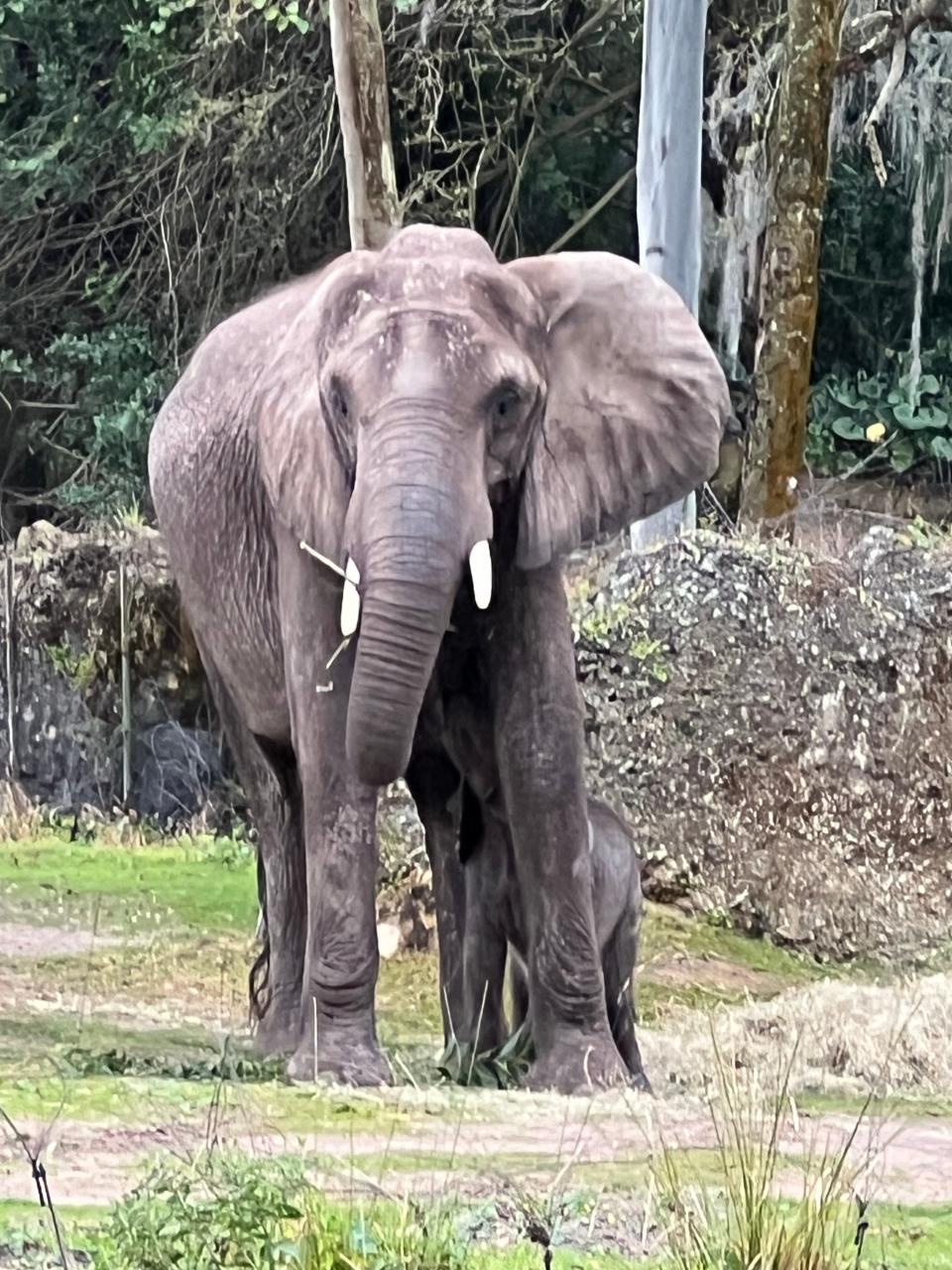
“Everybody thinks we do everything, and it's all science. There's an art to what we do, too, and that only comes with essentially living with these animals every day,” Terrell said. “Liz and Scott and the keepers that work here, they figured out that Luna was going to be the best buddy, and it turns out they were 100% right.”
When Corra was born, Pye said she was a little too small to reach her mom to nurse, which was especially critical in her first 48 hours.
“The early milk from mom contains colostrum. It’s full of antibodies that are really important for the health of the calf,” he said. As a workaround, Pye said platforms were built around the elephant barn, parts of the yard terrain were elevated, and Nadirah was trained to stand over those areas to help Corra reach. “Kudos to our elephant, having Nadirah train for that.”
“We want to take the best possible care of the animals here. We want them to thrive here. We want them to have beautiful little babies just like you see there and live wonderful lives,” Terrell said. “And we want to care for their counterparts (in the wild). And if we're not doing both of those things, then we're not doing our job.”
What does Disney's Animal Kingdom do behind the scenes?
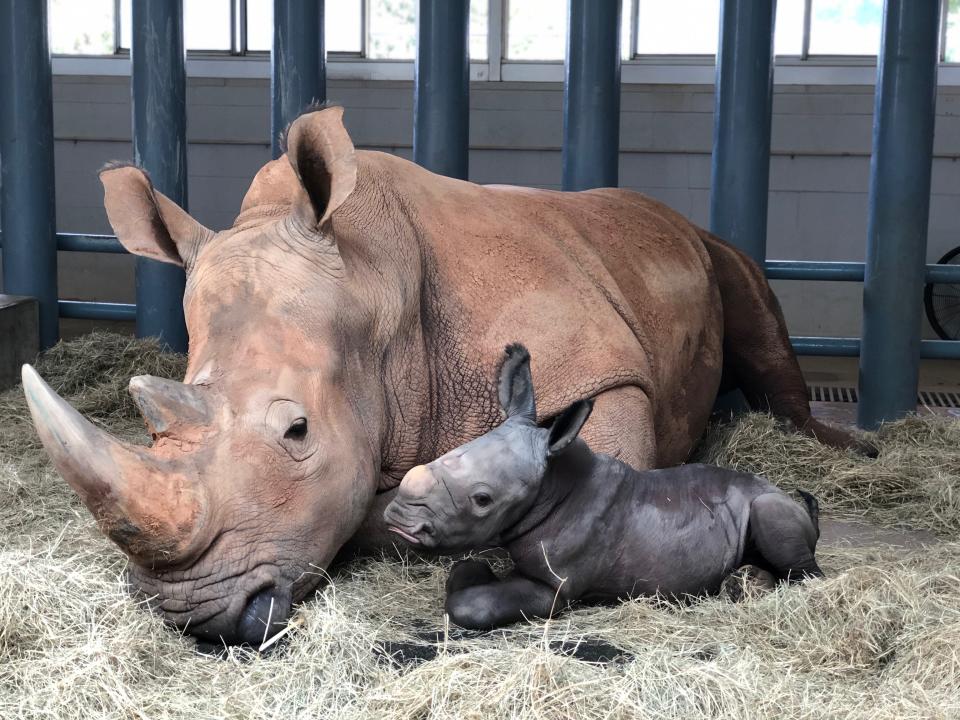
Over the years, the Disney Conservation Fund has given $125 million to nearly 600 organizations working to protect all kinds of species worldwide. Disney’s Animal Kingdom has partnered with many of them, including more than 30 organizations supporting elephants, according to Terrell.
“We discovered with a group called Save the Elephants this really incredible story that elephants aren't afraid of mice, like in ‘Dumbo.’ They're actually afraid of bees,” he said.
They learned that installing fences with beehives can keep elephants away from gardens that subsistence farmers rely on in Africa.
“One elephant can come in the night and eat their entire year's supply of fruits and vegetables, easily, much less a herd of elephants. Well, you're a parent, you have to feed your kids. You need to protect your food source. What do you do? You grab a gun and grab a box of poison,” said Terrell. He noted that, like the ivory trade and habitat loss, human conflict threatens elephants in the wild.
Working with elephants at Animal Kingdom, they learned that just playing bee sounds on speakers also deters elephants naturally.
“But if you do have the bees, then you can also harvest the honey. You can feed your family, maybe make a little money on the side,” he said, calling it a win win win.
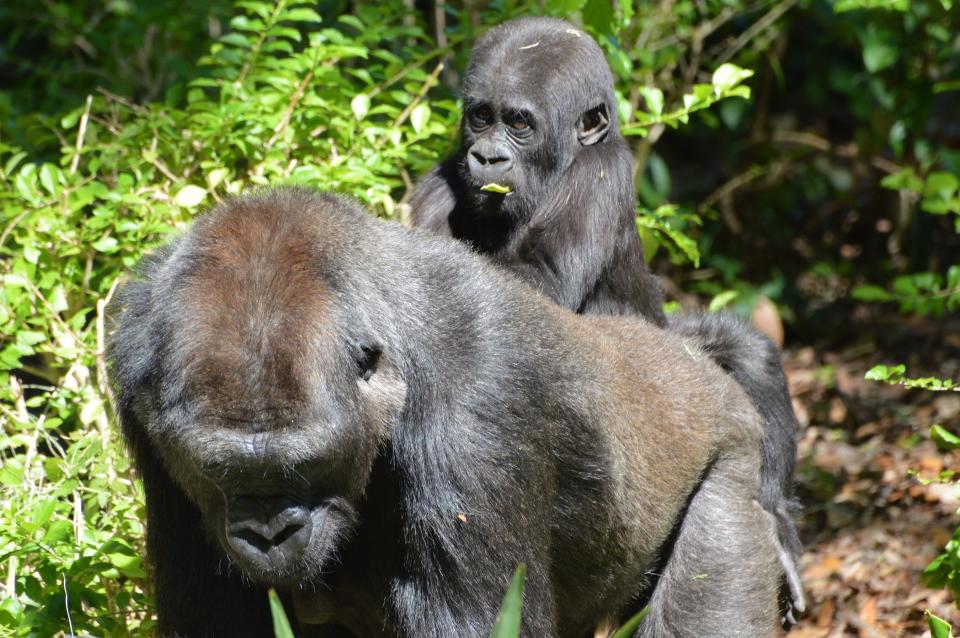
Other conservation efforts have included protecting the rainforest habitats of cotton-top tamarins in Colombia through Proyecto Titi, repatriating white rhinos to Uganda, and reintroducing Puerto Rican crested toads back to the wild.
“We're involved with a project in the Democratic Republic of Congo that's getting ready to do the first-ever rewilding of gorillas from a rescue situation,” Terrell said. Disney’s Animal Kingdom is a founding member of the Gorilla Rehabilitation And Conservation Education Center, GRACE, and a gorilla named Grace at the park helps guests connect with her counterparts in the wild.
Disney sends its experts and resources out to help in-country efforts, but also actively shares research and information on animal care.
“We recognize the privilege of having these animals and the responsibility that comes with having them, and in order to just pay off on that privilege, we need to make sure that we're making a difference,” Terrell said, noting that everything they learned from Corra's birth will be shared across the zoological community.
Where can I see the baby elephant at Disney's Animal Kingdom?
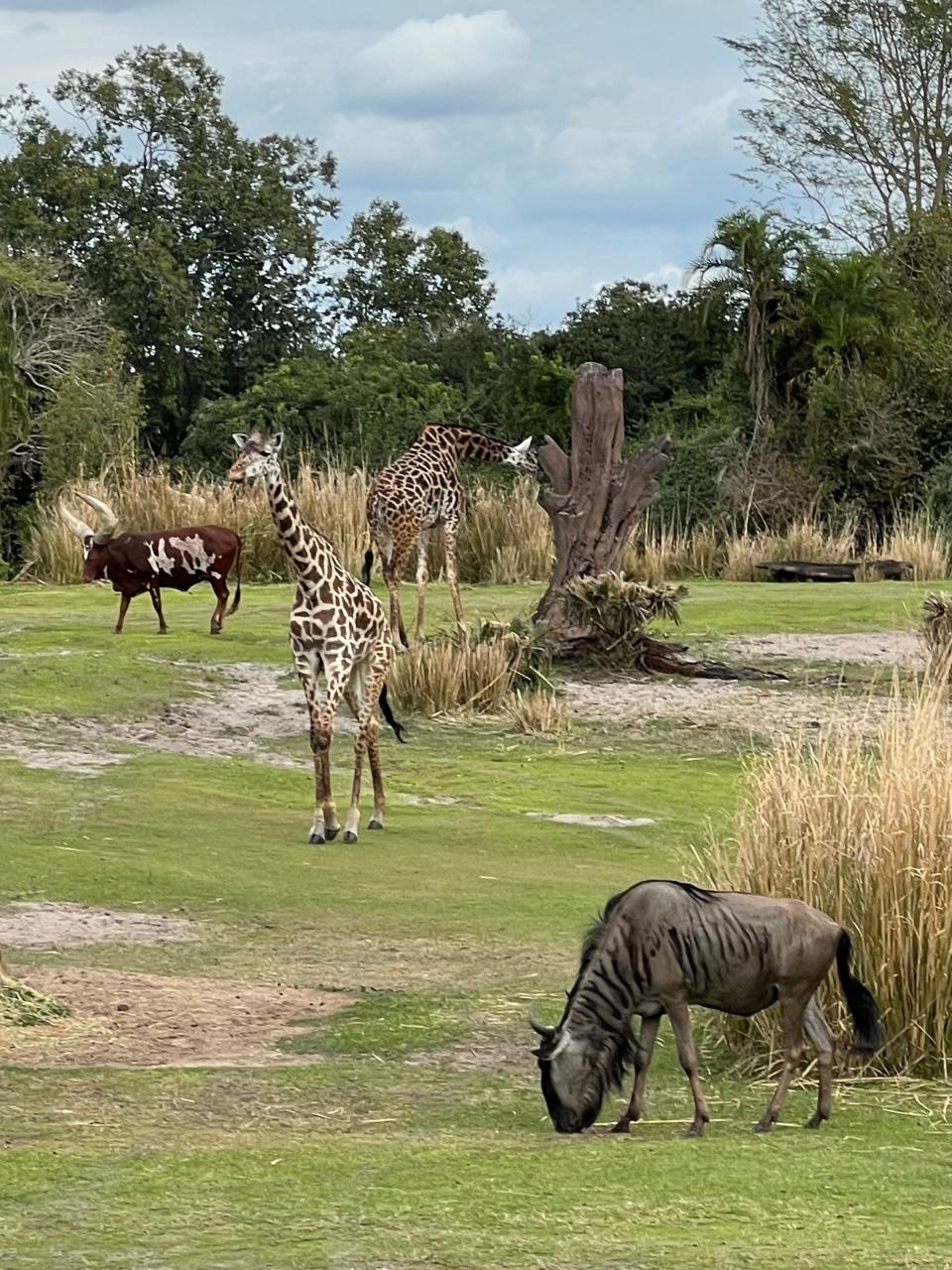
Disney's Animal Kingdom guests can see Corra for themselves on the popular Kilimanjaro Safaris attraction, but she may not always be out.
“We're rotating elephants all the time,” Warncke said. “We want to make sure that they're not always in the same yard, their day-to-day changes.”
Guests who want more time with the elephants can take the Caring for Giants tour, an hour-long experience that starts at $39, on top of park admission. All proceeds from the tour go directly toward elephant conservation efforts.
African elephants are just one of 300 species represented at Disney World. The Animals, Science and Environment team also cares for animals at Disney’s Animal Kingdom Lodge, The Seas with Nemo & Friends at EPCOT, and Tri-Circle D Ranch at Disney’s Fort Wilderness Resort and Campground.
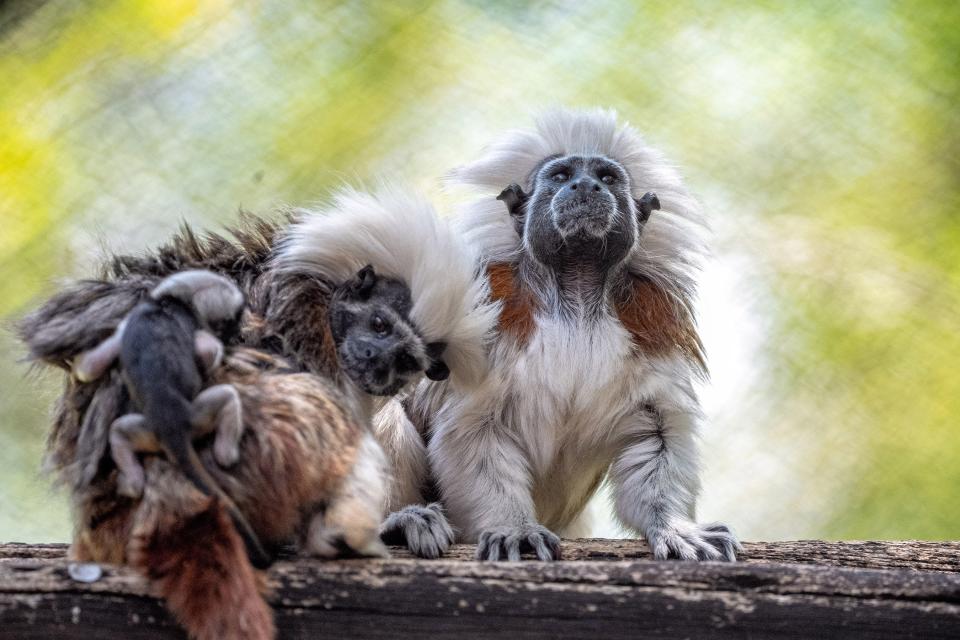
“I would just encourage people to find an animal that they love while they're here and then ask the cast members to share their stories because that's where I think the real magic of this place is," Terrell said.
Dr. Cat Wheaton, an endocrinologist for Disney’s Animals, Science and Environment welcomes questions at the Science Center at Conservation Station, where guests can see scientists like her at work.
“We can open up the window and just share what we're working on,” she said. “I ask, ‘What's your favorite animal here in the park? What did you see today that was really cool?’ We've probably worked on it.”
While guests may not see everything that happens behind the scenes at Disney's Animal Kingdom, the hope is they leave inspired to keep learning about animals like Corra and want to protect them, too.
“She will inspire millions of people in 2024 and beyond to care about elephants,” Terrell said.
The reporter on this story received access to this event from Disney. USA TODAY maintains editorial control of content.
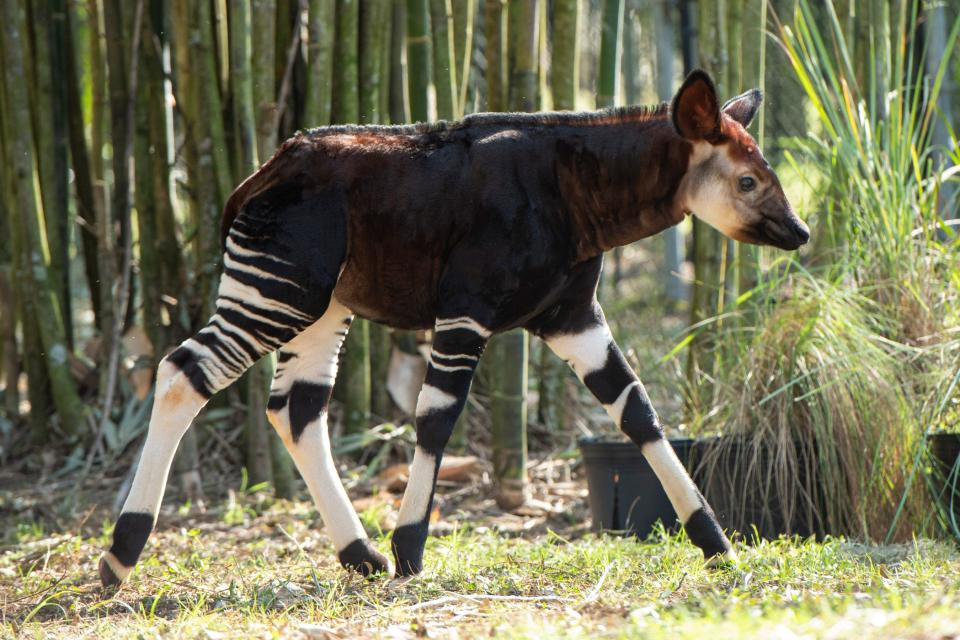
This article originally appeared on USA TODAY: Disney’s Animal Kingdom’s baby elephant is more precious than you know